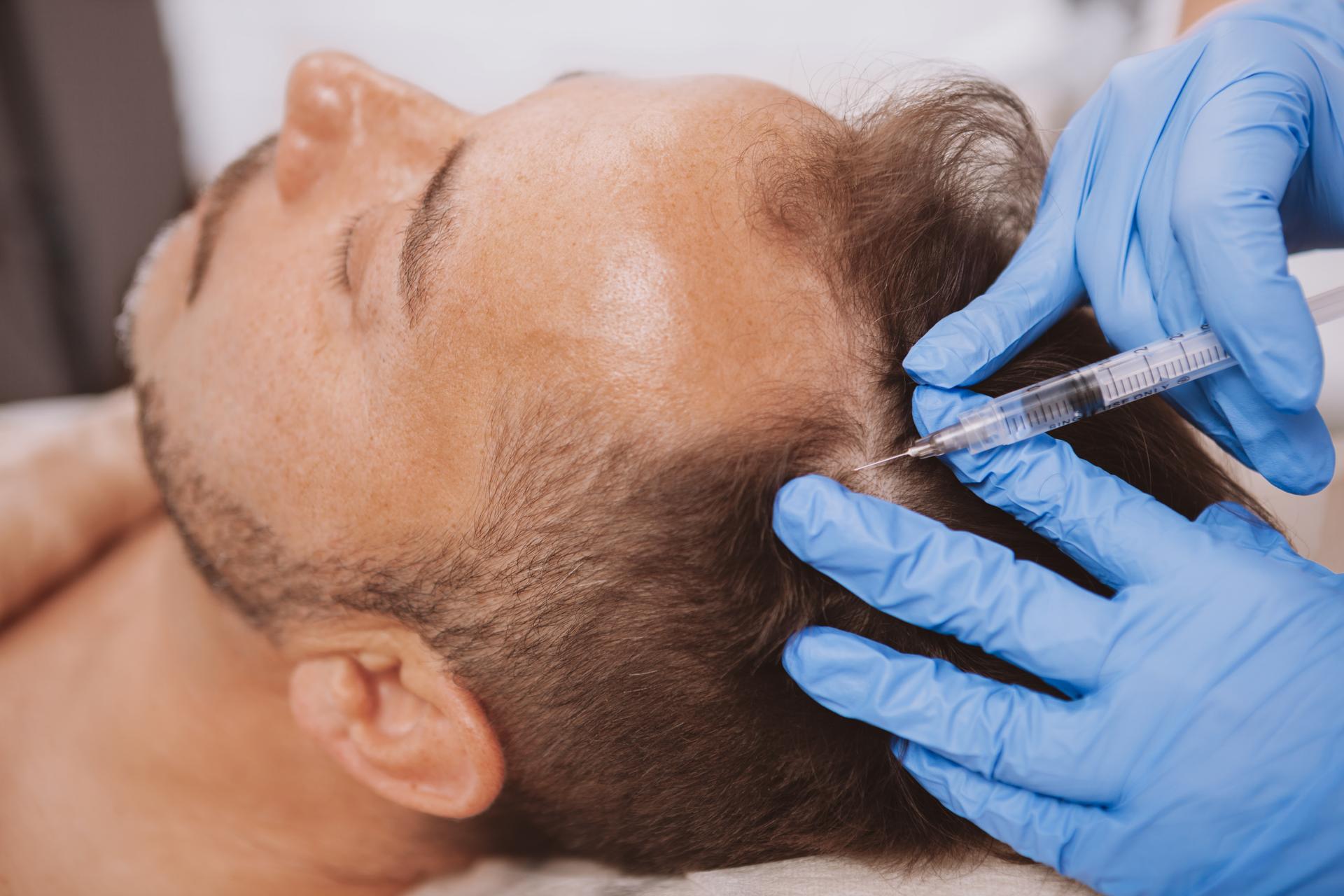Did you know that there are around 1,00,000 follicles on the average person’s scalp? Losing a few hair strands each day should not be cause for any serious concern; in fact, a person can lose around 250 hair strands on hair wash days. It’s normal for hairs to fall out because they will grow back. There is nothing to worry about until you experience excessive hair shedding and reduced hair growth. Research shows the hair loss problem in men is more evident than in women. About 85% of men experience hair thinning by the age of 50 due to various reasons. However, women are not immune from permanent hair loss; they account for 40% of the hair loss patients in the USA.
A condition called pattern hair baldness is a common cause of hair loss among most individuals. It leads to hair thinning in women and shows distinct patterns of baldness in men. Although medications and other therapies can slow down the process, the question remains: is there a permanent treatment for hair loss?
Most Common Permanent Treatments for Hair Loss
The hair loss type and circumstances determine which treatment procedure will suit you best. A hair transplant is an ideal procedure when there are bald patches on the crown of your head. It adequately addresses the hair fall problem in men and hair thinning concerns in women. However, this permanent treatment for hair loss is not a suitable option for:
- Women with scattered bald patches across the scalp
- People with insufficient hair growth at the donor hair site
- People with scars after injury or surgery
- People suffering from hair loss due to chemotherapy
Follicular unit extraction and follicular unit transplant are two main techniques to obtain follicles from a healthy area of your scalp. Let’s see how these two procedures work:
In Follicular Unit Extraction (FUE)
The surgeon extracts hair follicles from the back of your hair with the help of several tiny incisions and places them in the bald area by making tiny holes. The stitches are removed after ten days of the restoration surgery. It can take up to three to four sessions to adequately cover the bald area.
Follicular Unit Transplant (FUT)
On the other hand, utilizes a part of your scalp skin for hair restoration. The surgeon cuts out a part of your scalp skin using a scalpel and implants it in bald areas in small sections. Sutures are used to close the donor hair site. Both FUT & FUE techniques require higher precision and medical expertise.
See Also: FUE vs. FUT Hair Transplant – What Are the Differences?
Other Treatment Options for Hair Loss
Apart from the hair transplant, there are other treatment options available to treat hair loss:
Platelet Rich Plasma (PRP) Therapy is a non-surgical hair restoration option. This three-step procedure triggers natural hair growth by enhancing follicular blood supply.
Scalp Reduction is an expensive but effective way to treat hair loss permanently. The bald area of the scalp is removed, and a healthy scalp with good hair growth is stretched to provide a fuller look.
Hair Grafting is an outpatient procedure that uses micro grafts (1 to 2 hairs per graft) or slits grafts (10 to 15 hairs per graft) to cover the bald area of the scalp.
Benefits of Hair Loss Treatment
Hair loss treatments take a personalized approach and can benefit you in the following ways:
- It is a sustainable solution to restore hair with long-lasting benefits.
- Most hair loss treatments are cost-effective.
- They can restore your confidence.
- It’s easy to maintain hair post hair transplant.
See Also: Is PEP Factor an Alternative to PRP for Treating Hair Loss?
If you are experiencing hair loss or hair thinning, New Jersey Hair Restoration Center can provide you with the best hair transplant in Freehold, NJ. We ensure natural hair restoration and growth using minimally invasive and advanced techniques. Schedule a consultation today to get a permanent treatment for hair loss.


